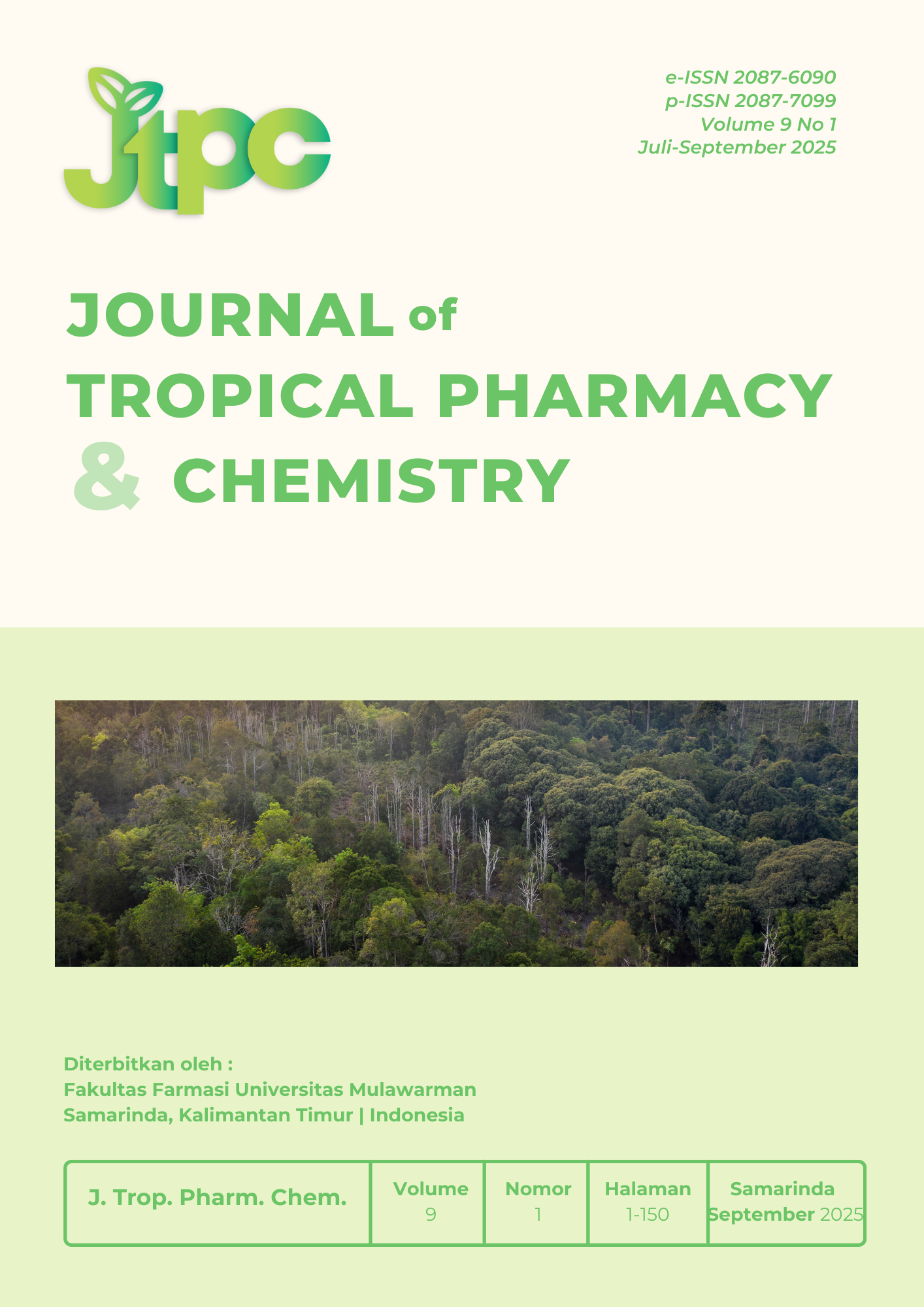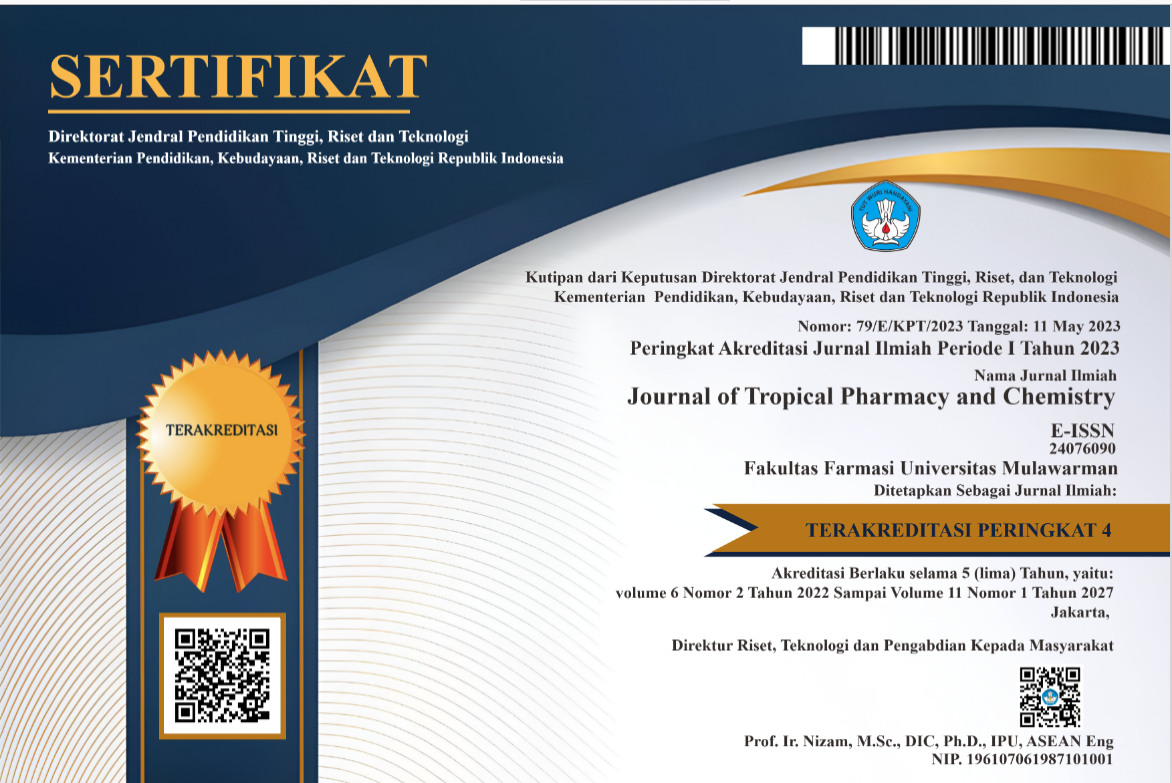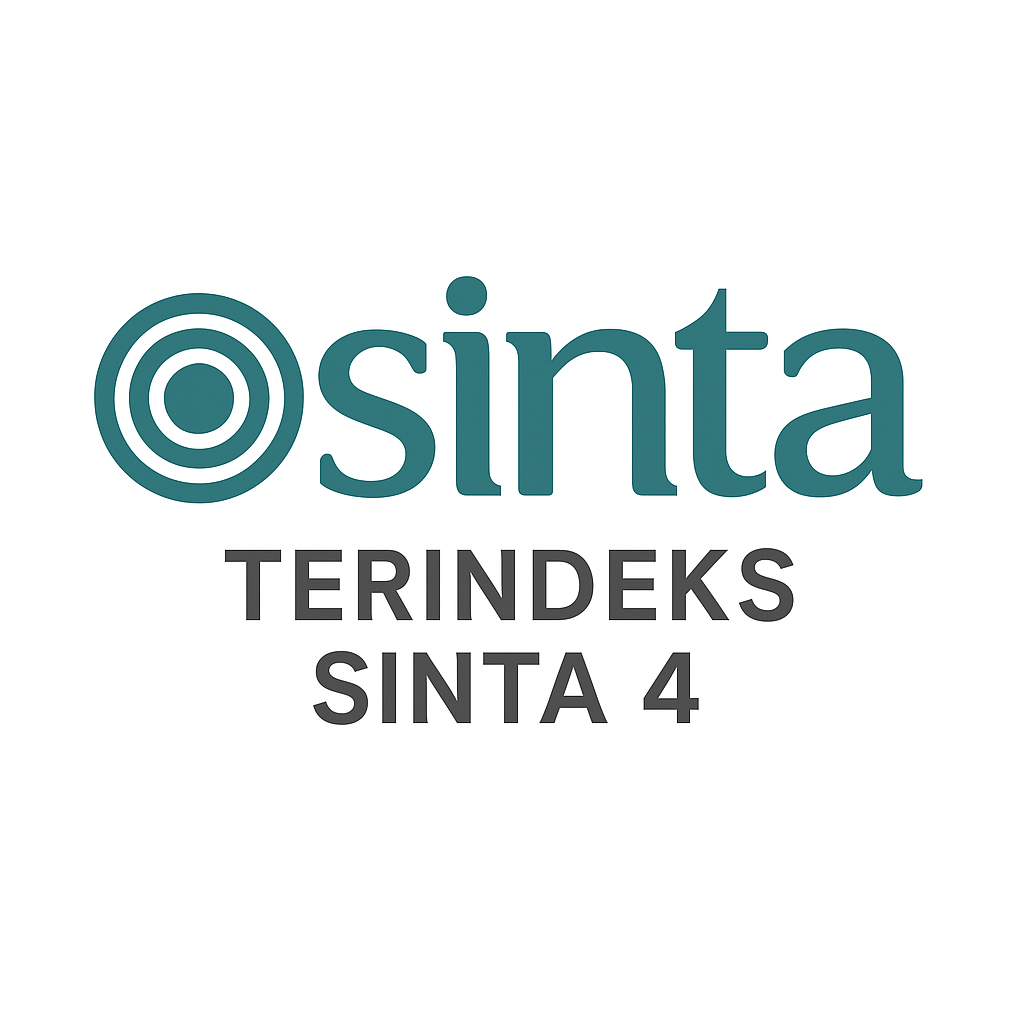Potential of Flavonoid Compounds from Etlingera elatior against Estrogen Receptor Alpha (ER+) as an Anti-Breast Cancer in Silico
DOI:
https://doi.org/10.30872/jtpc.v9i1.289Keywords:
Etlingera elatior,, breast cancer, molecular docking, estrogen receptor alpha, in silicoAbstract
Estrogen receptor positive (ER+) subtype breast cancer is one of the most common types of cancer in women and requires targeted therapy to improve the effectiveness of treatment. This study aims to explore the potential of active compounds flavonoid group from Etlingera elatior as estrogen receptor alpha (ERα) inhibitors through an in silico approach. Nine compounds were predicted for their pharmacokinetic and toxicity characteristics using SwissADME, then three compounds with the best profiles were selected for molecular docking using AutoDock. The results of the analysis showed that the epicatechin compound had the best binding affinity (–7.57kcal/mol) and a low inhibition constant (Ki 2.80μM), approaching the positive control value of tamoxifen (-10.49kcal/mol; Ki 20.32μM). Epicatechin also showed a good pharmacokinetic profile, was non-toxic, and was conformationally stable in the active pocket of ER+. Thus, epicatechin has the potential as a candidate for natural anticancer agents for the development of ER+ subtype breast cancer therapy based on natural compounds.
Downloads
References
[1] Sung H, Ferlay J, Siegel RL, Laversanne M, Soerjomataram I, Jemal A, et al. Global Cancer Statistics 2020: GLOBOCAN Estimates of Incidence and Mortality Worldwide for 36 Cancers in 185 Countries. CA Cancer J Clin 2021;71:209–49. https://doi.org/10.3322/caac.21660.
[2] Perou CM, Sørlie T, Eisen MB, van de Rijn M, Jeffrey SS, Rees CA, et al. Molecular portraits of human breast tumours. Nature 2000;406:747–52. https://doi.org/10.1038/35021093.
[3] Afladhanti PM, Hamzah HA, Romadhan MD, Putri SN, Angelica EC, Theodorus T. Etlingera elatior Compounds as Anticancer Agents of Breast Cancer Through Inhibition of Progesterone Receptor: An In Silico Study. Indones J Cancer Chemoprevention 2023;14:94. https://doi.org/10.14499/indonesianjcanchemoprev14iss2pp94-104.
[4] Rej RK, Thomas JEII, Acharyya RK, Rae JM, Wang S. Targeting the Estrogen Receptor for the Treatment of Breast Cancer: Recent Advances and Challenges. J Med Chem 2023;66:8339–81. https://doi.org/10.1021/acs.jmedchem.3c00136.
[5] Ni Wayan Bogoriani, Sri Wahjuni, Maria Krissanti Ema. Antioxidant activity of kecombrang flower (Etlingera elatior) methanol extract and identification of its compounds using LC-MS/MS. Indones J Biomed Sci 2023;17:172–7. https://doi.org/10.15562/ijbs.v17i2.480.
[6] Ramadhan DSF, Fakih TM, Arfan A. Activity Prediction of Bioactive Compounds Contained in Etlingera elatior Against the SARS-CoV-2 Main Protease: An In Silico Approach. Borneo J Pharm 2020;3:235–42. https://doi.org/10.33084/bjop.v3i4.1634.
[7] Long J, Ye P, Yuan W, Yang Q, Wang Z, Xiao H, et al. Research progress of flavonoids targeting estrogen receptor in the treatment of breast cancer. Bioorg Med Chem 2025;120:118106. https://doi.org/https://doi.org/10.1016/j.bmc.2025.118106.
[8] Farhan M, Rizvi A, Aatif M, Ahmad A. Current Understanding of Flavonoids in Cancer Therapy and Prevention. Metabolites 2023;13. https://doi.org/10.3390/metabo13040481.
[9] Anastasya G, Wensa L, Permata S, Amatulloh A, Fath ZTA, Zuhrotun A. In Silico Study of Klabet Seed Compounds (Trigonella foenum-gracum L.) as Alpha Estrogen Inhibitors In Breast Cancer. Indones J Biol Pharm 2023;3:183–93.
[10] Amrilah MS, Hilman R. In Silico Studies for Anti-Breast Cancer Acmella Oleracea (L.) Flowers. J Farm Sains Dan Prakt 2024;10:12–24.
[11] Mutmainah M, Mayangsari Y, Santoso U, Chansuwan W, Sirinupong N. Phytochemical profile and antioxidant activity of torch ginger (Etlingera elatior) inflorescence extract after in vitro simulated digestion. Funct Foods Heal Dis 2024;14:528–45. https://doi.org/10.31989/ffhd.v14i7.1382.
[12] Usmani J, Kausar H, Akbar S, Sartaj A, Mir SR, Hassan MJ, et al. Molecular Docking of Bacterial Protein Modulators and Pharmacotherapeutics of Carica papaya Leaves as a Promising Therapy for Sepsis : Synchronising In Silico and In Vitro Studies 2023.
[13] Widiyarti G, Sundowo A, Megawati M, Ernawati T. Synthesis, Characterization, Anticancer and In Silico ADME Properties of Caproic Acid Derivatives against P388 Cancer Cell Lines. Indones J Pharm Sci Technol 2019;1:1. https://doi.org/10.24198/ijpst.v1i2.20192.
[14] Salsabila AS, Safira RZ, Sari WA, Nugraha AR, Wulandari D, Protein I, et al. In Silico Study of Moringa leaves Compound ( Moringa oleifera L .) as Protein Kinase C Alpha Inhibitor in Breast Cancer. Indones J Biol Pharm 2023;3:154–73.
[15] Durán-Iturbide NA, Díaz-Eufracio BI, Medina-Franco JL. In Silico ADME/Tox Profiling of Natural Products: A Focus on BIOFACQUIM. ACS Omega 2020;5:16076–84. https://doi.org/10.1021/acsomega.0c01581.
[16] Lelita R, Gunawan R, Astuti W. Molecular Docking Studies Quercetin, Chalcone and its Derivate Inhibitor to Breast Cancer Cells Mcf-7 (Michigan Cancer Foundation-7). J At 2017;1:190–6.
[17] Wu P, Sun R, Fahira A, Chen Y, Jiangzhou H, Wang K, et al. DROEG: a method for cancer drug response prediction based on omics and essential genes integration. Brief Bioinform 2023;24:1–12. https://doi.org/10.1093/bib/bbad003.
Published
Issue
Section
License
Copyright (c) 2025 Nastiti Nur Indriyani (Author)

This work is licensed under a Creative Commons Attribution-NonCommercial 4.0 International License.




